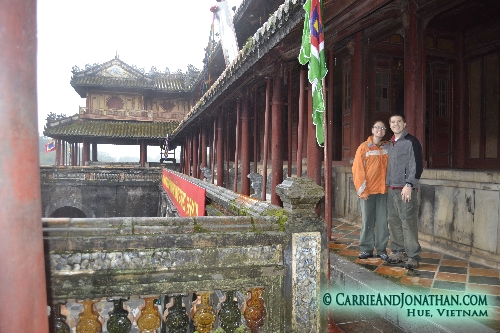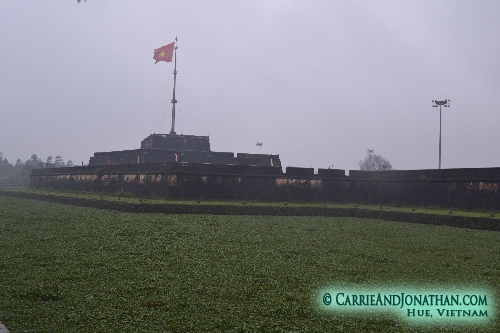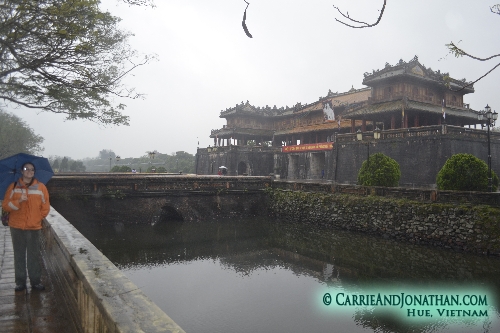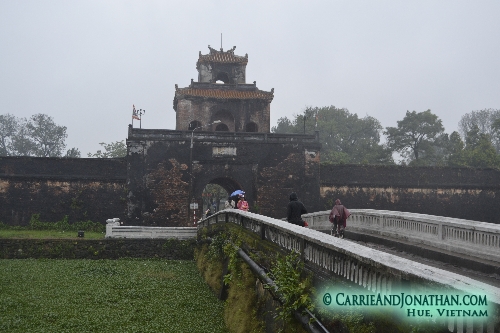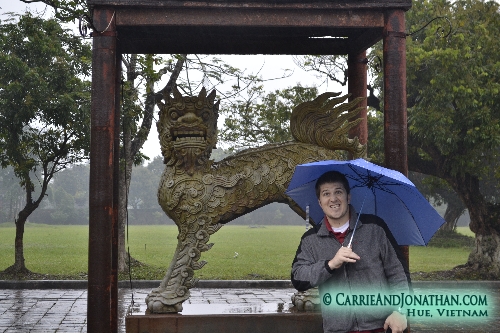Just a forewarning, the following thoughts on Hue are colored by: cold, rainy weather, and walking (in the cold and the rain) for an hour in the wrong direction before getting where we wanted to go.
Having arrived in Hue early in the morning after taking the night train from Hanoi, the first order of business was a nap.
Then, with our one day in Hue, we wanted to see the sights of the city, especially The Citadel.
So, we set off walking. In the rain. The cold rain. Why? Because I’m crazy sometimes. We could have taken a cyclo (small taxi either by bicycle or motorbike) for $5. But I thought it would be more fun to walk.
I was wrong. We took a cyclo back.
We set off, guided on our way by the city map given to us by the hotel. We kept remarking on how “not to scale” the map was. But, as it turns out, that day neither of us could really read a map.
So, we walked. For an hour. In the wrong direction. In the cold. Wet. Rain.
But, by the time we finally made it all the way to The Citadel, most of the other tourists had gone, and it was only open for another 1.5 hours. We basically had the place to ourselves.
The Citadel is an early 19th century fortress (and fortress it is too – it was impenetrable during the American War). There are about 4 moats surrounding it, and a very impressive entrance gate.
We walked around and saw the 20 buildings (of the original 148) that survived the war.
We also saw some pretty amazing jade carvings.
After 3 hours in the wet it was time for a hot meal and more than one hot chocolate.
For those who want to know the history / significance:
The seat of the Nguyễn emperors was the Citadel, which occupies a large, walled area on the north side of the Perfume River. Inside the citadel was a forbidden city where only the emperors, concubines, and those close enough to them were granted access; the punishment for trespassing was death. Today, little of the forbidden city remains, though reconstruction efforts are in progress to maintain it as a historic tourist attraction.
Roughly along the Perfume River from Huế lie myriad other monuments, including the tombs of several emperors, including Minh Mạng, Khải Định, and Tự Đức. Also notable is the Thiên Mụ Pagoda, the largest pagoda in Huế and the official symbol of the city.
–Wikipedia

